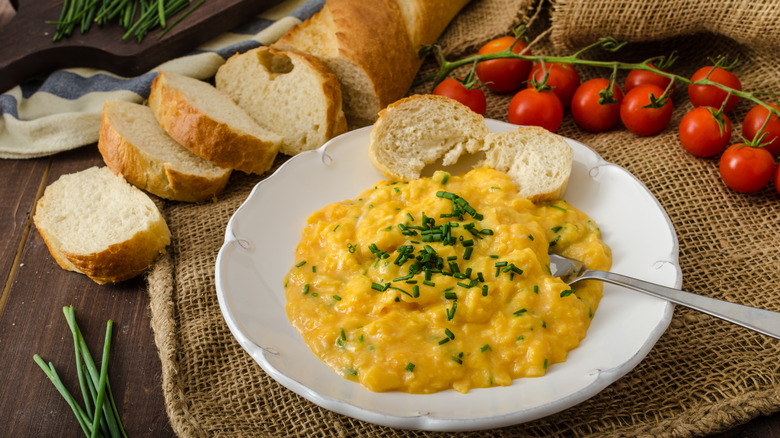Jacques Pepin's Trick For Extra Smooth Scrambled Eggs
Jacques Pépin is a world-renowned chef, cookbook author, and television personality, known for his French cuisine and culinary expertise. Born in Bourg-en-Bresse, France in 1935, he grew up in a family of cooks and restaurateurs and began his culinary career as an apprentice at his family's restaurant, Le Pelican, at the age of 13. Pépin went on to work in several of the top restaurants in France before moving to the states in 1959. In America, he worked at New York's vaunted Le Pavillon before moving on to become the culinary director of research and new development for the Howard Johnson chain of hotels.
Pépin's adherence to culinary technique is a hallmark of his approach to cooking. Throughout his career, he has emphasized the importance of mastering the fundamentals of cooking, such as knife skills and sauce-making. For Pépin, cooking is not just about following a recipe, but about understanding the science behind the cooking process and applying that knowledge to create the best possible dish.
It is often said that the true measure of a chef is how adept they are at preparing eggs. Pépin is well-known for his egg cookery and even shared with Tasting Table his preference for high-quality, organic eggs when he wants to cook up something like a classic French omelet.
Controlling the temperature
Pépin's approach to scrambled eggs, which he shared on the PBS show "American Masters," is much the same, with simple, but well-sourced ingredients and no shortage of technique coalescing to turn out a dish that is supremely rich and creamy. These are no American diner, large curd scrambled eggs, but rather French scrambled eggs that have a fine and slightly-runny consistency.
To start, Pépin cracks the eggs into a mixing bowl with seasoning and herbs, such as chive, and whisks them vigorously with a fork until they are well combined. The crucial step here is to reserve a small amount of the beaten eggs off to the side. He then adds a small amount of cold butter to a sturdy skillet set over medium-low heat. Once the butter has melted, Pépin adds the eggs to the skillet and begins to gently, but constantly stir them with a whisk, making sure to scrape the bottom of the pan as he goes. He continues to stir the eggs over the heat, folding them over themselves occasionally, until they are just set but still slightly runny.
Pépin then removes the pan from the heat and whisks in his reserved egg mixture and some heavy cream. These two additions, both of which are cold, halt the cooking process and ensure that the scrambled eggs are the ideal consistency. The result is a dish that is both simple and elegant, with a perfect balance of flavors and textures.

